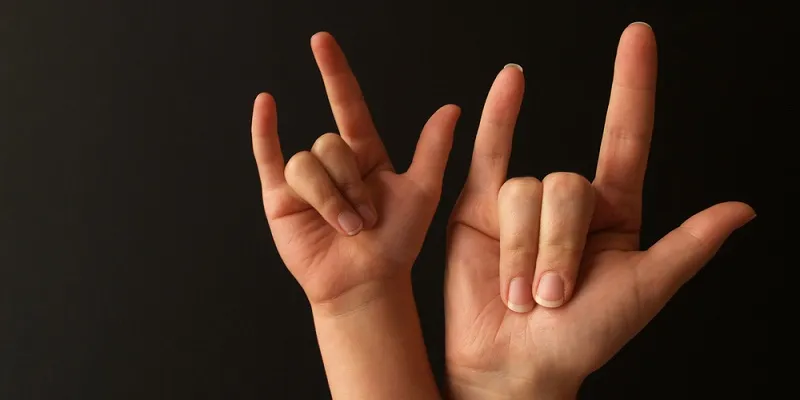Breaking the silence around deafness
“Silence is the last thing the world will ever hear from me,” says Marlee Beth Matlin, the recipient of the Academy Award for Best Actress in a Leading Role for Children of a Lesser God (1986). Despite having a successful career to show for, what seems to grab all the attention is that this 51-year-old American starlet lost her hearing when she was but 18 months old.
Marlee, however, forms the minority of population that has overcome the baggage that comes along with deafness, with the rest still fighting the stigma attached to the condition.

In India alone, four in 1,000 children suffer from severe to profound hearing loss. Over 63 million people (6.3 percent) are diagnosed with significant hearing impairment. Globally, around 360 million people i.e., five percent of the world’s population suffers from hearing loss. Out of this, nine percent, or 32 million, are children below the age of 15 years. And the remaining 91 percent, that is 360 million adults, suffer from the loss.
According to the World Health Organization (WHO), hearing loss is the most widespread sensory loss in humans today. But, despite these shocking numbers, most people are unaware of its effects and the treatment options that are available. The Organization defines Hearing loss as –
As sensory deficit that leads to being partially or completely unstable to hear sound in one or both ears. Delay in the identification and treatment of any native auditory impairment can profoundly affect quality of life in terms of linguistic exchange, social and emotional development, education and employment prospects.
Though the loss affects all the age groups, up to five of every 1,000 infants are born with or develop the disability at an early childhood. One out of every three people over 65 years are affected from hearing loss. According to a data released by WHO, out of the 32 million children who suffer from hearing loss, 60 percent are preventable cases.

Causes of deafness
Thirty-one percent of the cases are caused by infections, including from mumps, rubella, meningitis, measles and ear infections. Seventeen percent is caused due to birth-related causes, such as complications at birth, prematurity and low birth weight. Four percent is caused due to ototoxic medicines or reactions to them and eight percent are others such as head or ear injury, and exposure to excessive noise.
Myths and reality
Breaking the myth surrounding genetically-caused defects, a survey says that 90 percent of children with hearing impairment are born to hearing parents. With the advent of technology and the growing concerns revolving around its wrong usage, nearly 1.10 billion young people worldwide are at a risk of hearing loss due to unsafe listening practices.
The loss is a global public health issue and there is definitely an urgent need for universal screening at birth in India that can identify hearing loss in babies. This makes early intervention possible, thereby reducing the trauma of hearing loss.

Consequences if not addressed
If the precautionary measures and cure is delayed and the cause is not addressed in time, it may lead to delayed language development, academic under-achievement, social isolation, higher risk of injuries and low functioning, to name a few.
All these can be avoided if the public is educated about the cause and timely actions are taken against it.
Strategies for prevention and care
Early identification and treatment of hearing loss is crucial among both adults and young children. It opens the door to their integration into mainstream society. Some of the few strategies can include strengthening maternal and child healthcare programmes, including immunization of people with hearing loss; implementing a mandatory infant and school-based hearing screening; training healthcare professionals in hearing care; increasing the accessibility of hearing devices and communication therapies, by regulating and monitoring the use of ototoxic medicines and environmental noise; and, most importantly, by raising awareness to promote hearing care and to reduce the stigma around it.
Though the awareness about the subject is quite minimal there are a few organization working towards bridging this gap. We at SocialStory are launching a campaign to create awareness, bust myths and do away with stigma surrounding deafness. With your support, we plan to celebrate the individuals who have overcome the loss to lead a better life and help bring in better policies to detect deafness at an early stage for early intervention.
Together, let’s hear them out and break the silence around deafness.







